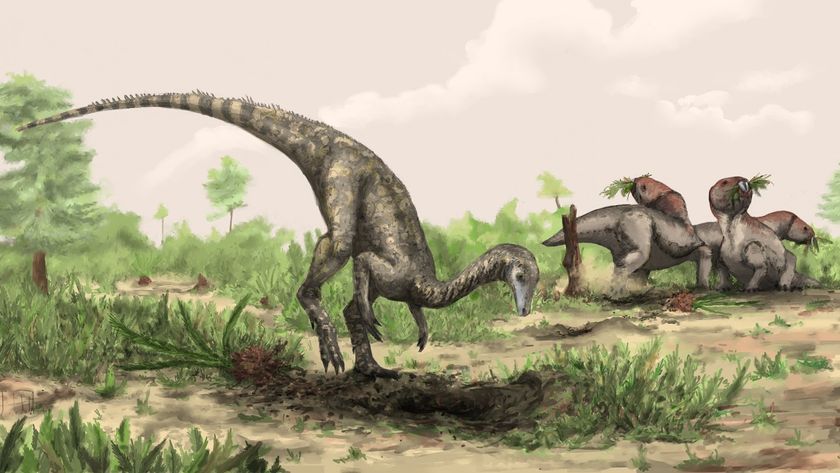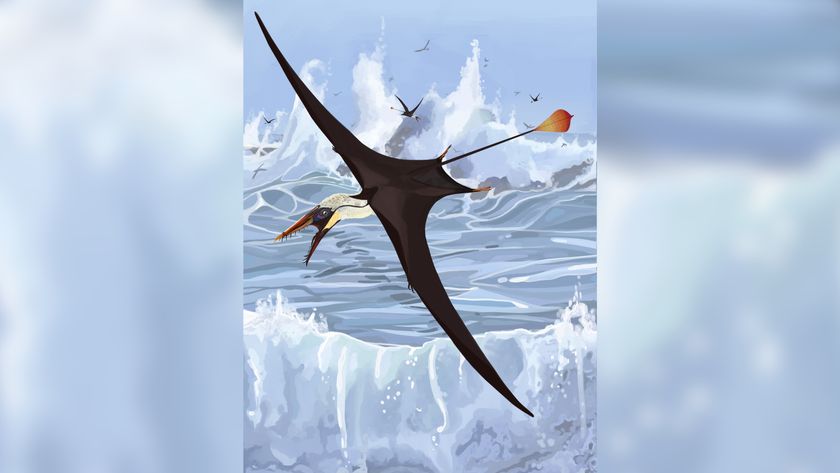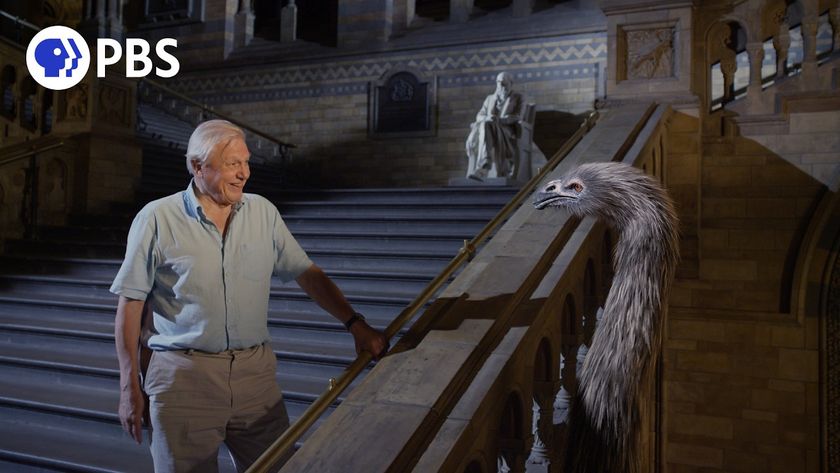Dinosaur with 'Bent Sword' Head Spikes Unearthed in Utah
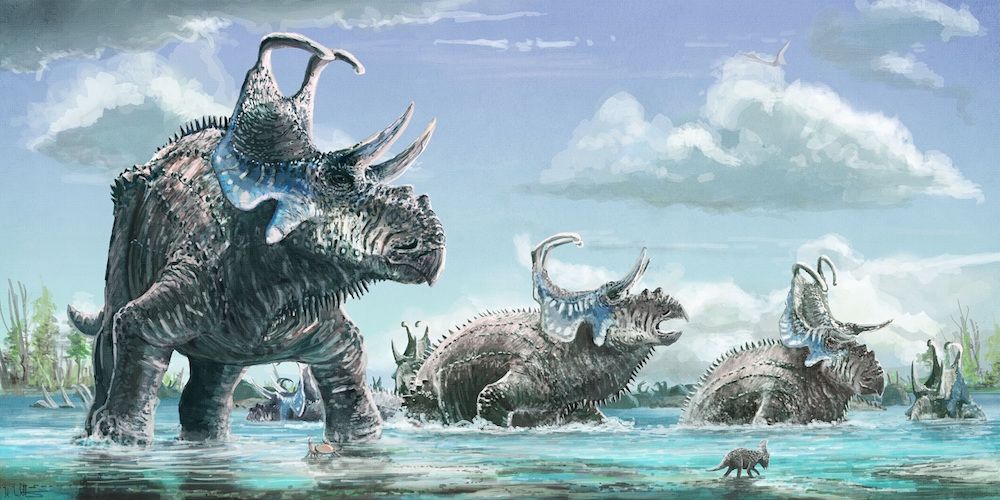
About 77 million years ago in prehistoric Utah, a bizarre, big-horned dinosaur with two curved spikes sticking out of the top of its head plodded across the countryside, say researchers who found specimens of the paleo-beast.
Each curved head spike measured about 4 feet (1.2 meters) long, and though their function isn't clear, they may have been used to attract mates, said study lead author Eric Lund, a graduate student of biological sciences at the Ohio University Heritage College of Osteopathic Medicine.
The "horny" finding fills in an important gap in the fossil record of southern Laramidia, an area that included Utah, Colorado, New Mexico, Texas and Mexico during the Late Cretaceous period, Lund said. [Photos: Oldest Known Horned Dinosaur in North America]
Researchers first unearthed pieces of the dinosaur's skull in 2006, and returned to Grand Staircase-Escalante National Monument, in southern Utah, for a total of three field seasons to look for more of the remains. But they couldn't locate the rest of the body, and instead concentrated on studying what they could find: pieces of its curved head spikes, cheeks, head frill, braincase and the two almost 8-inch-long (20 centimeters) horns it had over its eyes.
Despite its impressive head spikes and horns, the dinosaur wasn't a giant compared with other dinosaurs, reaching about 20 to 26 feet (6 to 8 m) in length. At 1 to 2 tons (0.9 to 1.8 metric tons), the herbivorous beast weighed less than an African elephant. (Male African elephants can weigh up to 7.5 tons (6.8 metric tons), according to the San Diego Zoo.) It was also lighter than its relative Triceratops, which weighed between 3 and 4 tons (2.7 to 3.6 metric tons) and lived about 10 million years after it, Lund told Live Science.
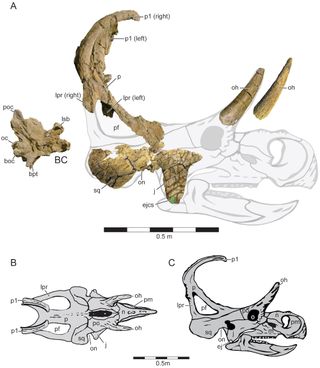
The researchers named the new species Machairoceratops cronusi. The genus name comes from "machairis," the Greek word for "bent sword," in reference to the dinosaur's two curved head spikes, and "ceratops" is Latinized Greek for "horned face." The species name is a reference to the Greek god Cronus, who, in mythology, used a sickle or scythe — that is, a curved blade, much like the dinosaur's head spikes — to oust his father Uranus, the researchers wrote in the study.
M. cronusi is a centrosaurine, a subfamily of the horned dinosaur group called ceratopsid. These dinosaurs had parrot-like beaks, large noses, facial horns and ornamental frills (neck shields). Researchers have unearthed many centrosaurine fossils in northern Laramidia, an area that includes Alaska, Alberta, Saskatchewan and Montana, but far fewer have been found in southern Laramidia, Lund said.
Sign up for the Live Science daily newsletter now
Get the world’s most fascinating discoveries delivered straight to your inbox.
The remains of Diabloceratops eatoni, another horned dinosaur that lived about 80 million years ago, were found in 1998 in the same rock formation as M. cronusi. Another horned dinosaur found from southern Laramidia, Nasutoceratops titusi lived about 76 million years ago.
"The discovery of Machairoceratops not only increases the known diversity of ceratopsians from southern Laramidia, it also narrows an evolutionary information gap that spans nearly 4 million years between Diabloceratops eatoni from the lower middle Wahweap Formation and Nasutoceratops titusi from the overlying Kaiparowits Formation," Lund said in a statement.
The finding also underscores the importance of looking for new fossils in North America.
"There are still new horned dinosaurs to be found, especially from the southern portion of Laramidia," Lund told Live Science. "We're getting at filling in that information gap and seeing that the evolutionary pressures that acted upon the southern part of Laramidia are different than in the north."
The study was published online today (May 18) in the journal PLOS ONE. Also reported today in PLOS ONE is another newfound horned dinosaur species, Spiclypeus shipporum, which scientists uncovered in Montana and dated to about 76 million years ago.
Follow Laura Geggel on Twitter @LauraGeggel. Follow Live Science @livescience, Facebook & Google+. Original article on Live Science.

Laura is the archaeology and Life's Little Mysteries editor at Live Science. She also reports on general science, including paleontology. Her work has appeared in The New York Times, Scholastic, Popular Science and Spectrum, a site on autism research. She has won multiple awards from the Society of Professional Journalists and the Washington Newspaper Publishers Association for her reporting at a weekly newspaper near Seattle. Laura holds a bachelor's degree in English literature and psychology from Washington University in St. Louis and a master's degree in science writing from NYU.
